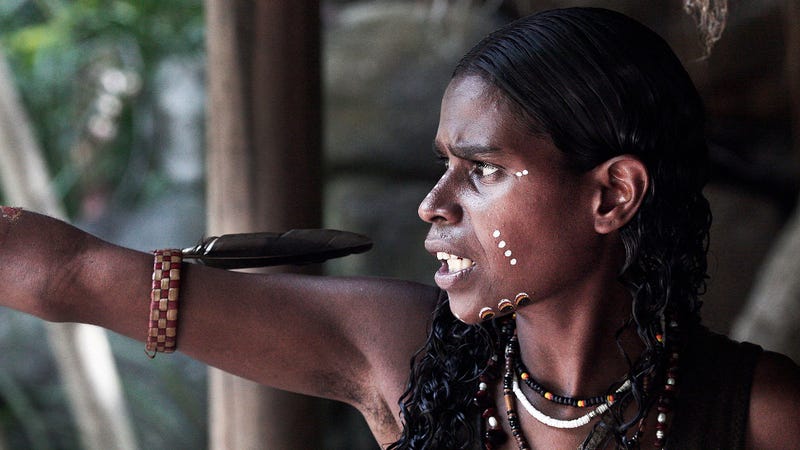
Aboriginal Australians Are Humanity’s Oldest Civilization
George Dvorsky
New research shows that all present-day non-Africans can trace their origins to a single wave of migrants who left Africa 72,000 years ago, and that indigenous Australians and Papuans are descended directly from the first people to inhabit the continent some 50,000 years ago. That makes them world’s longest running civilization.
A genetic and cultural analysis of 83 Aboriginal Australians and 25 Papuans from New Guinea paints a compelling picture of how and when early humans first spread themselves around the globe. The new paper,published in Nature, suggests there was just one wave of humans out of Africa, and these these early migrants gave rise to all contemporary non-Africans, including Australians.
“Our results suggest that, rather than having left in a separate wave, most of the genomes of Papuans and Aboriginal Australians can be traced back to a single ‘Out of Africa’ event which led to modern worldwide populations,” noted Manjinder Sandhu, a senior author from the Sanger Institute and University of Cambridge, in a statement. “There may have been other migrations, but the evidence so far points to one exit event.”
Genetic tracing suggests this initial migratory pulse out of Africa happened around 72,000 years ago. The ancestors of indigenous Australians and Papuans split from this pioneering group around 58,000 years ago as they continued to make their eastward journey. (By comparison, European and Asian ancestral groups diverged around 42,000 years ago.) Around 8,000 years later, they reached “Sahul”—a prehistoric supercontinent that connected Australia, New Guinea, and Tasmania. Rising seas cut them off from the rest of the world about 10,000 years ago, and they’ve been there ever since.
This means that indigenous Australians are the longest running civilization in the world, a longstanding claim that has now finally been proven. “This study confirms our beliefs that we have ancient connections to our lands and have been here far longer than anyone else,” proclaimed Aubrey Lynch, an indigenous Australian elder, in a Guardian article.
Intriguingly, the authors of the new study uncovered genetic evidence that points to the existence of an unknown human species that interbred with anatomically modern humans as they migrated through Africa. “We don’t know who these people were, but they were a distant relative ofDenisovans, and the Papuan/Australian ancestors probably encountered them close to Sahul,” said Eske Willerslev, a professor at St John’s College and the University of Cambridge. Further work in genetics and archaeology may reveal more about these mysterious humans in the future.
Finally, the researchers presented new perspectives on how Aboriginal culture itself developed, raising the possibility that a mysterious, internal migration happened some 4,000 years ago. This would explain the presence of younger languages and the emergence of new stone technologies in the archaeological record.
[Nature]
No comments:
Post a Comment